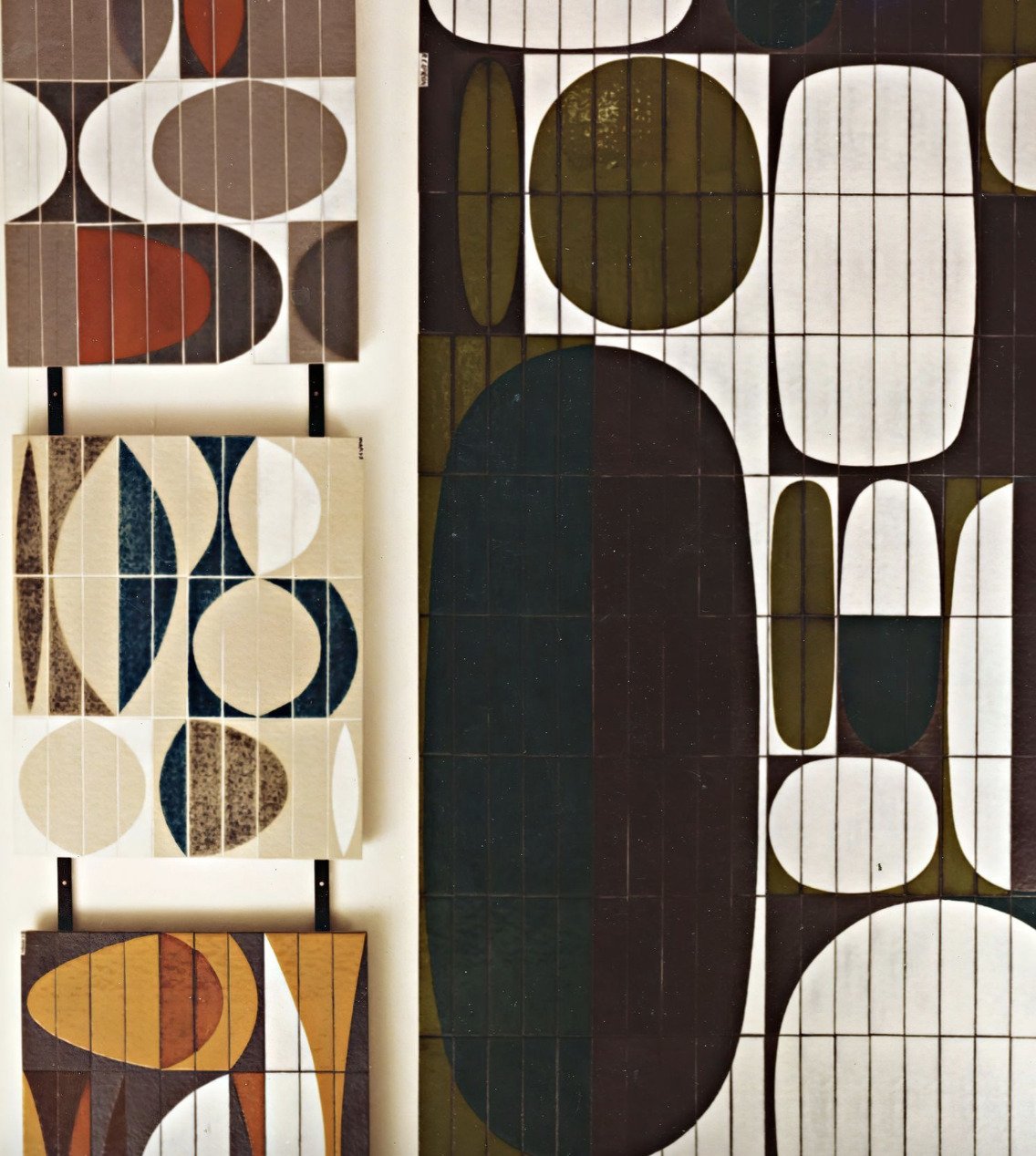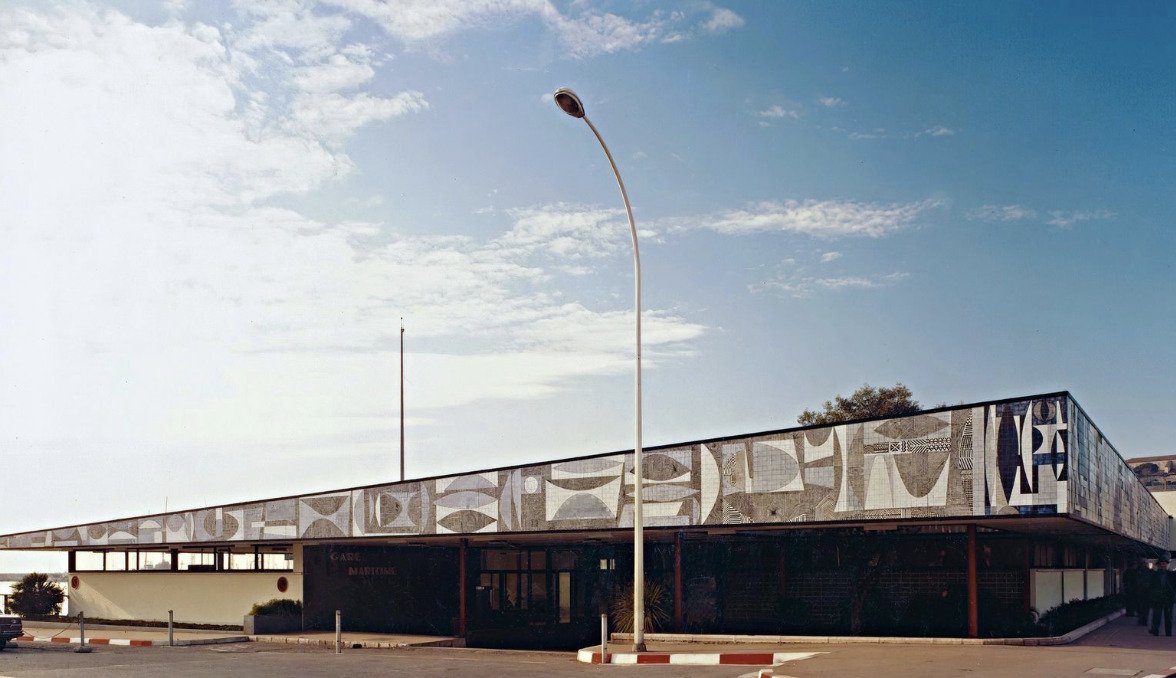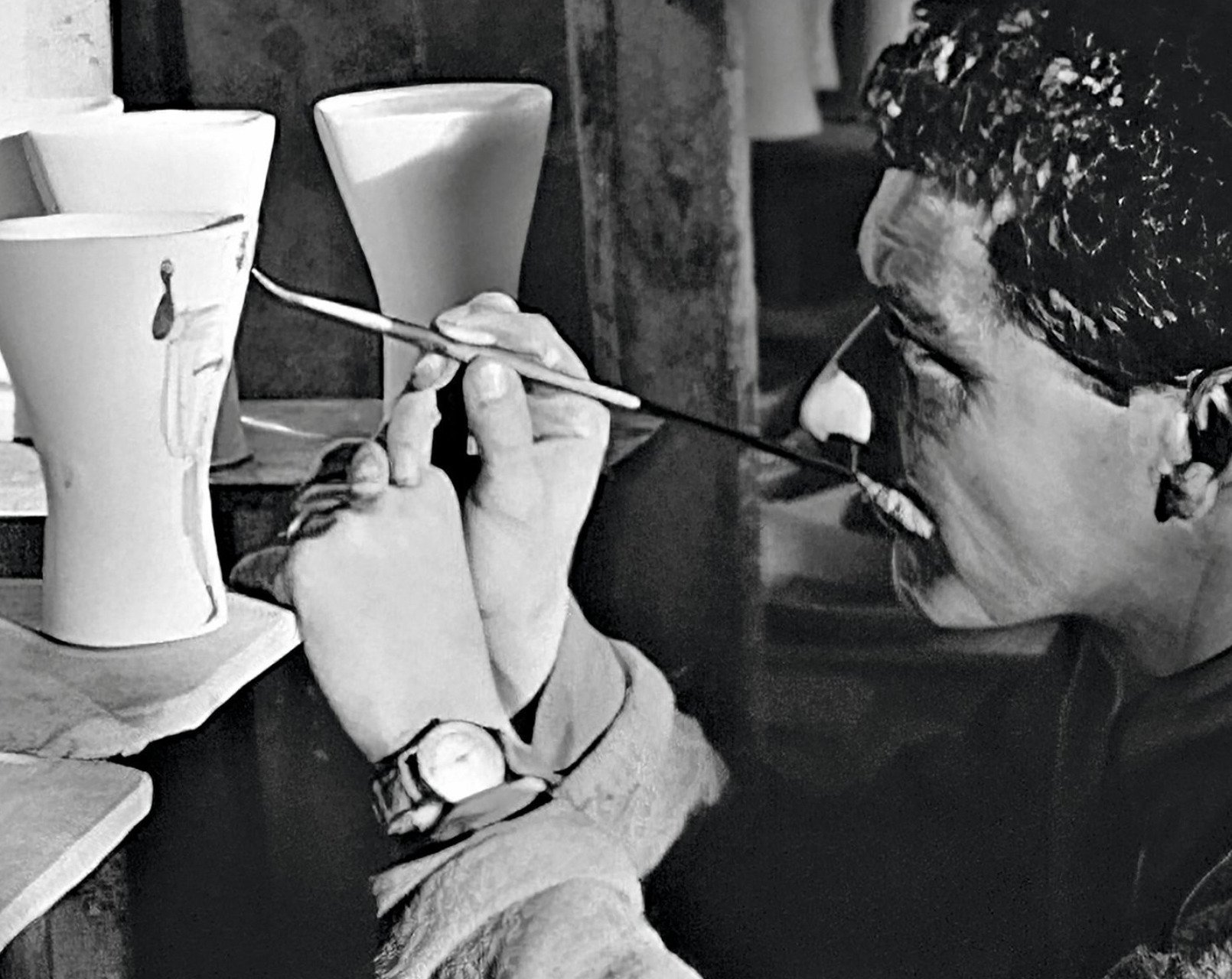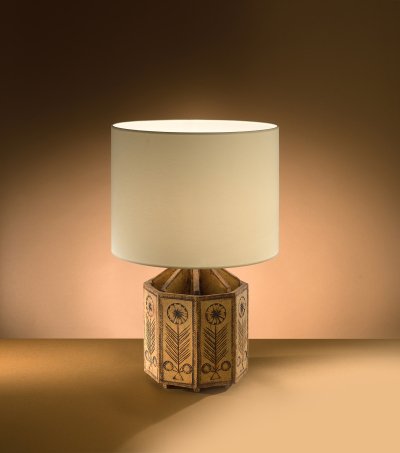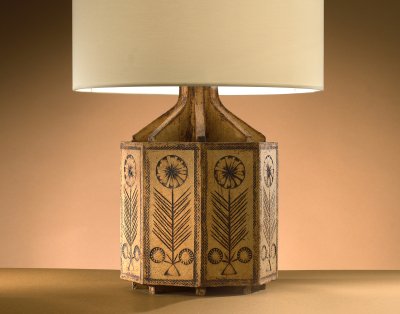Roger Capron
Roger Capron (1922–2006) was a French ceramist who played a key role in the revival of the art in the 1950s. After studying at the École des Arts Appliqués à l’Art et à l’Industrie from 1938 to 1943, he returned to the same institution as a teacher. In 1946, he moved to Vallauris with Robert Picault, and together they founded the Callis workshop in 1947, later joined by Jean Derval. At that time, Capron’s pieces were distinguished by their generous forms and strong relief decorations. In 1950, he took part in a group exhibition at the Madoura workshop, led by Pablo Picasso. This encounter sparked in him the desire to produce ceramics on a larger scale, making his creations more widely accessible. He shifted his techniques from wheel throwing to slip casting, and by 1952, following disagreements with his colleagues, Capron opened his own pottery factory. His cast forms from this period reflect the free, organic spirit of the 1950s, with signature grid decorations in black-and-white paraffin resist, later enhanced with color.
A new direction began in 1958, when Capron turned toward tiles and decorative panels, gradually leaving behind functional pottery for architectural work. In this new field, he found a way to combine industrial fabrication with artistic research. His formal vocabulary—stylized animals, suns, and geometric motifs—spread through furniture, murals, and architectural panels, demonstrating his mastery in merging design with everyday environments.
